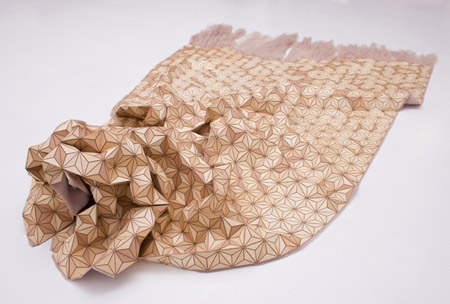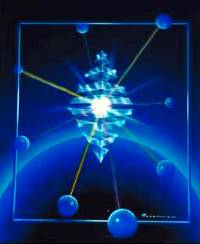Bamboo fabric is a natural textile made from the pulp of the bamboo grass. Bamboo fabric has been growing in popularity because it has many unique properties and is more sustainable than most textile fibers. Bamboo fabric is light and strong, has excellent wicking properties, and is to some extent antibacterial. The use of bamboo fiber for clothing was a 20th century development, pioneered by several Chinese corporations. fabric is very soft and can be worn directly next to the skin. Many people who experience allergic reactions to other natural fibers, such as
wool or
hemp, do not complain of this issue with
bamboo. The fiber is naturally smooth and round without
chemical treatment, meaning that there are no sharp spurs to irritate the skin.
Bamboo fiber resembles
cotton in its unspun form, a
puffball of light, airy fibers. Many companies use extensive bleaching processes to turn
bamboo fiber white, although companies producing organic
bamboo fabric leave the
bamboo fiber unbleached. To make
bamboo fiber,
bamboo is heavily pulped until it separates into thin component threads of fiber, which can be spun and dyed for
weaving into cloth.
Organic Cotton Clothing GOTS Bamboo Clothes Built-in Antimicrobial Technology for Plastics, Coatings, Textiles... |
Bamboo
Bamboo fabric is favored by companies trying to use sustainable textiles, because the
bamboo plant is very quick growing and does not usually require the use of pesticides and
herbicides to thrive. As a result, plantations can easily be kept organic and replanted yearly to replenish stocks. The process of making unbleached
bamboo fiber is very light on chemicals that could potentially harm the environment.
In textile form,
bamboo retains many of the properties it has as a plant.
Bamboo is highly water absorbent, able to take up three times its weight in water. In
bamboo fabric, this translates to an excellent wicking ability that will pull moisture away from the skin so that it can evaporate. For this reason, clothing made of
bamboo fiber is often worn next to the skin.
Bamboo also has many antibacterial qualities, which
bamboo fabric is apparently able to retain, even through multiple washings. This helps to reduce bacteria that thrive on clothing and cause unpleasant odors. It can also kill odor causing bacteria that live on human skin, making the wearer and his or her clothing smell more sweet. In addition,
bamboo fabric has insulating properties and will keep the wearer cooler in summer and warmer in winter. The versatility of
bamboo fabric makes it an excellent choice for clothing designers exploring alternative textiles, and in addition, the
fabric is able to take bright dye colors well,
drape smoothly, and star in a variety of roles from knit shirts to woven skirts.
http://www.wisegeek.com/what-is-bamboo-fabric.htm


















 Researchers from the UK and Russia have unveiled - in the journal Science - the world's first single-atom-thick fabric. The research team, led by Andre Geim at The University of Manchester, has succeeded in extracting individual planes of carbon atoms from graphite crystals, which has resulted in the production of the thinnest possible fabric - graphene. The resulting atomic sheet is stable, highly flexible and strong and remarkably conductive. The nanofabric belongs to the family of fullerene molecules and is the first two-dimensional fullerene.
Researchers from the UK and Russia have unveiled - in the journal Science - the world's first single-atom-thick fabric. The research team, led by Andre Geim at The University of Manchester, has succeeded in extracting individual planes of carbon atoms from graphite crystals, which has resulted in the production of the thinnest possible fabric - graphene. The resulting atomic sheet is stable, highly flexible and strong and remarkably conductive. The nanofabric belongs to the family of fullerene molecules and is the first two-dimensional fullerene. 










